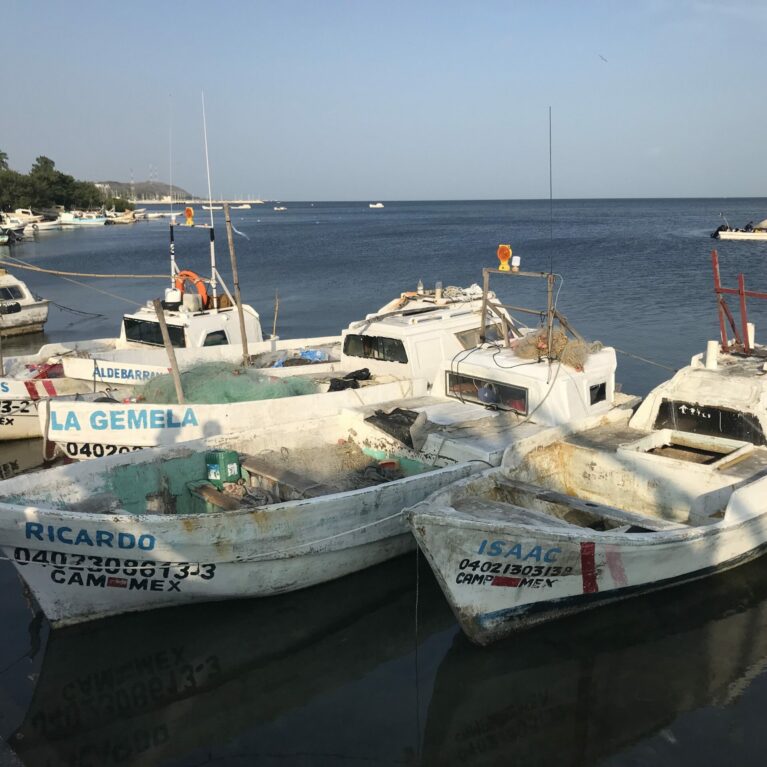It’s elemental: shark life histories from cartilage chemistry
John is looking at the histories that are laid down in the cartilage of shark skeletons throughout their lives, exploring chemical tagging as an alternative means of understanding the details of sharks’ life histories. While we use acoustic, satellite and physical tagging to understand how sharks move and what they do, natural chemical tagging might provide a complementary or alternative method that overcomes some challenges. He will be using spiny dogfish and thorny skates as model species to validate this novel technique.
I am a fish ecologist with broad interests in the life history and population dynamics of fish. I am fascinated by biominerals, the calcified structures that grow incrementally and provide clues to the age of fish and the environments they experience. In my current role as an assistant professor, I am both an educator and a researcher and I mentor undergraduate and graduate students. Mentorship is extremely important to me, as my own mentors shaped the scientist I am today. When I am not in the classroom or lab, you can find me skateboarding, surfing, disc golfing, hiking...
Elements and elasmobranchs: laboratory validation of vertebral chemistry to improve life history studies
To understand how elements are incorporated into elasmobranch cartilage, to advance knowledge of life history and to support the management and conservation of vulnerable species.
Few methods exist to study the complete life histories of elasmobranchs. Elemental investigations of mineralised chronological cartilage show promise, but laboratory validation is needed to advance this technique in order to promote the conservation of vulnerable species.
The life histories of elasmobranchs are mysterious. Advances in electronic tagging technology have increased our understanding of detailed movement patterns, both horizontally and vertically. This information is essential for defining population structure, assessing connectivity and developing management strategies for conservation. While biotelemetry does provide useful information, it is limited to data post-tagging and only for time frames of months to years. Alternative approaches to studying the life history of elasmobranchs is needed, such as the application of natural chemical tags.
Natural chemical tagging might overcome some of the limitations of electronic tags. First, every individual in a population is naturally marked as they behave normally, so capture and handling is not required. Natural tags include calcified structures that grow incrementally, such as mineralised vertebral cartilage in all elasmobranchs, external spines in dogfish and exterior thorns in skates. All these calcified structures record time and vertebrae uniquely and contain a maternal region that accretes while an embryo is in utero. Thus, natural tags provide a complete life history of an individual.
As natural tags grow, the calcified structures assimilate elements and isotopes from the surrounding water via respiration or through digestive pathways and dietary uptake. Ultimately, dissolved elements in the blood are then transferred to mineralised cartilage as structures grow. Gaining a better understanding of this biochemical process can be achieved using stable isotope ratio spiking experiments. We will also test the usefulness of non-lethal samples (spines and thorns) in model elasmobranch species.
The aim of this project is to confirm the incorporation of elements in the mineralised cartilage of model elasmobranch species, spiny dogfish and thorny skate. The objectives are:
- To design experimental recirculating tank systems to maintain spiny dogfish and thorny skates for long-term validation studies, including an isotope spiking experiment to inject different isotope combinations into the specimens and the serial sampling of blood to investigate the timeline of blood uptake of isotopes.
- To conduct a temperature (low, medium, high) experiment on thorny skates to investigate growth effects on element uptake.
- To analyse the elemental composition of spines, thorns and vertebrae of each species in relation to experimental treatments.


